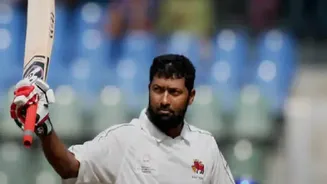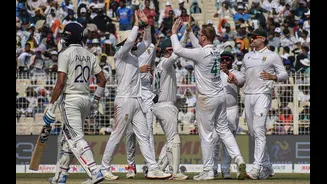IND vs SA 2nd Test: India walk into the second Test against South Africa carrying the weight of a bruising defeat at Eden Gardens-one that has forced a long,
hard look at their long-trusted home formula. The Kolkata surface, which deteriorated alarmingly early, produced extravagant turn and uneven bounce that made batting feel like a gamble rather than a contest of skill.
A chase of 124, something India would normally back themselves to complete comfortably, spiralled into an unexpected collapse, leaving the hosts 0-1 down in a two-Test series.
What has become increasingly clear over the past year is that the aura India once commanded on sharp turners has faded. The current batting group has repeatedly faltered on pitches that assist high-quality spin. The 3-0 series whitewash in New Zealand and now the Kolkata implosion underline a worrying pattern: this lineup-frequently tuned to T20 tempo-struggles to absorb pressure, play long innings, or apply classical Test-match technique on demanding surfaces.
This is in stark contrast to the era when Virat Kohli and others turned such pitches into playgrounds, grinding out match-defining knocks with a blend of discipline and skill. With that expertise no longer at India's disposal, relying on rank turners has become a high-risk strategy.
And that brings the focus sharply onto Guwahati's Barsapara Cricket Stadium. What kind of track should India ask for? The old blueprint-extreme spin from Day 1-may no longer be serving its purpose. India's spinners are still world-class, but the batting doesn't inspire the same trust on such surfaces. Meanwhile, India's fast-bowling unit has evolved into one of the most formidable in Test cricket, capable of winning matches on fair, competitive pitches.
A true Test wicket-good for batting early, progressively offering assistance to pacers and later to spinners-may be India's safest and smartest route. It allows the hosts to aim for totals in the 300-400 range, something improbable on raging turners, while still keeping their bowlers in the game throughout.
This pitch for a test match is likely to be batting-friendly initially with good bounce and pace, but it is expected to slow down over time, assisting spinners in the later stages of the game. While it may offer early help to both pacers and batters, the pitch will require patience and good technique from batsmen as it gradually becomes more challenging.
So, India adopting this philosophy could not only revive their home dominance but also sharpen their edge abroad. Guwahati might just be the place where that shift begins.















